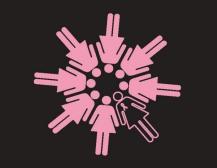By Matthew Gromet, J.D., M.D., F.A.C.R.
Section Chief, Mammography
Charlotte Radiology
What is the appropriate age to begin screening for breast cancer? This question has sparked quite a debate in the media, and fueled confusion among women. But the recommendation from breast health experts is consistent: women should have annual screening mammograms beginning at age 40.
Some suggest that screening in the 40’s is only necessary for women at high risk for breast cancer. However, the majority of women (75-90 percent) who develop breast cancer have no family history or elevated risk for the disease. Another important fact is that breast cancer in women under age 50 is often more aggressive.
Early detection gives women more treatment options, including reduced surgery and better cosmetic outcomes, and often reduces the need for harsh chemotherapy. This safe screening tool has reduced the mortality rate from breast cancer in the United States by 30 percent since 1990. These factors, among others, make it important to detect cancer early through annual screenings starting at age 40.
The Centers for Disease Control and Prevention (CDC) reports only 65% of women 40 years and older have a mammogram at least every 2 years. New healthcare regulations require private health insurers to cover screening mammography at no cost annually for women starting at 40. Imagine the impact screening mammography could have on mortality rates if all women took advantage of this screening tool.
As we age, our risk of developing breast cancer increases. National Cancer Institute statistics show that women in their 40’s are three times more likely to develop breast cancer than women in their 30’s. This is a key reason for recommending annual mammography at age 40.
Charlotte Radiology, the largest provider of breast imaging in the Carolinas, reviewed 12 years of data for over 600,000 screening patients. We found that over 20 percent of our screening patients diagnosed with breast cancer were in their 40’s. This means one out of five women may have had different outcomes had they chosen to delay their exam. Our data are consistent with national findings, which is why we recommend annual mammography beginning at age 40.
It’s also important to note that screening mammography is not perfect, and does not detect every cancer. That’s why an annual clinical exam by a health professional is also needed. Mammography does, however, find early cancers more frequently than any other test. It is clinically proven to reduce breast cancer deaths and it can provide more treatment options and improved cosmetic outcomes.
American Cancer Society Guidelines for Early Detection:
– Women age 40 and older should have a mammogram every year and continue to do so for as long as they are in good health.
– Starting at age 40, women should have an annual clinical breast exam (CBE) by a health professional.
– Women in their 20’s should learn about breast self-examination (BSE), including its benefits and limitations as a tool for cancer detection. Any breast changes, in particular new lumps should be reported promptly to a health professional.
– Women at high risk (greater than 20 percent lifetime risk) should get an MRI and a mammogram every year. If you have a strong family history or other known high risk factor for breast cancer, speak to your doctor.
If you are 40 or over, don’t ignore your risk for breast cancer. Get an annual screening mammogram and have an annual clinical breast exam by a health care professional.
For additional information or to schedule your annual screening please visit www.charlotteradiology.com or call 704.367.2232.



